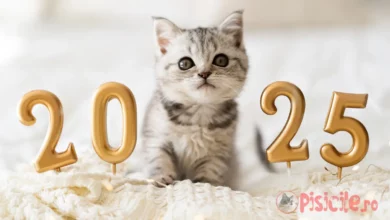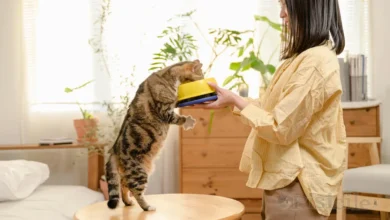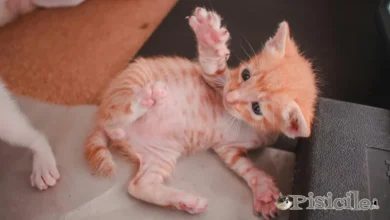
The heat period in cats, also called estrus, is the stage in the sexual cycle of the female cat, when she is willing to mate and adopts a specific behavior.
Heat periods in cats can be from early spring to late fall, but in the case of house cats that do not have a mating partner, heats can occur several times a year.
For those who have cats in the house, this period is not exactly a peaceful one, because the cat changes its behavior a lot and becomes vocal, wants more attention or is very restless.
Subject
How do you know when a cat is in heat?
When cats are in heat, they become very vocal and make sounds that sometimes resemble a baby crying. The cat begins to meow more often and more intensely than it usually did and begins to rub against objects, furniture or people's legs. As an invitation to heat, the cat in heat begins to raise its tail more often, rolls on the floor, arches its back and raises its hindquarters.
Other signs of cats in heat include excessive genital licking, urinating in unusual places to mark their territory, and decreased appetite. Some cats completely refuse any type of food during this period of heat.
How long is the heat period in cats?
The heat period in cats lasts on average two to three weeks, but it can vary from one cat to another. There are cats in which the heat lasts for a week, while in others this period can exceed three weeks.
The heat cycle in cats is divided into four distinct phases, each with an average length of time.
Prostrate. This is a period of 4-7 days when the cat is not receptive to mating, but may already show some signs of typical behavior, such as rubbing furniture and objects, meowing specific to cats in heat.
Estrus. It is a period of 5-7 days when the cat is fertile and receptive to mating. During this period, the cat shows the most intense symptoms of heat, and for those who have cats in the house, this is the most difficult period.
diestru. It is a period of 2-7 days when the cat is no longer receptive to mating and the symptoms of heat begin to disappear.
Anestrus. The "quiet" period between heats, which can last from a few weeks to a few months.
So, proestrus and estrus together last between 9 and 14 days, with an average of 7 days, best defining the heat period in cats. During this period, the cat begins to characteristically meow, even excessively, becomes very affectionate, rolls, rubs against objects, urinates more often and in more places (their urine contains pheromones and smells stronger), adopts the lordosed position (the posterior part raised , tail raised), signaling receptivity to the male.
At what age does the cat go into heat and can she be pregnant?
In cats, childhood does not last very long, although they maintain their playful character into old age. On average, a cat could go into heat between 6-9 months, but there are also cases where heat cycles occur between 4 and 12 months. In general, short-haired cat breeds go into heat earlier, while long-haired or larger breeds may not go into heat until 18 months of age.
Even if cats go into heat at a young age, it is recommended that the cat be pregnant after 12-14 months of age. Then she is a mature cat and can complete the task.
How to prevent the heat period in cats?
The best and surest method to prevent the heat period in the cat and so that she is not pregnant is neutering. Through ovariohysterectomy, the cat's ovaries and uterus are surgically removed, so that it cannot develop diseases and medical complications.
Read also: Sterilization of Cats and Castration of Cats – Benefits and Risks
Sterilization of female cats can be done from the age of 6 months, but it is not recommended to do this if the cat is in heat. Under the influence of ovarian hormones, the wall of the uterus is much thicker and vascularized, which can raise risks during the sterilization operation. Heavy bleeding, post-operative infections and a longer recovery time. In addition, the heat period in cats is a physical stress to which would be added the stress of the sterilization operation. It is recommended that sterilization be done 8-10 days after the cat comes out of heat.
Can medication be administered to bring the cat out of heat?
Definitely not. The hormonal preparations that are administered to cats to force them out of heat come with a series of risks that you should not assume. These treatments, whether in the form of pills or injections, cause severe hormonal imbalances in the cat's body and can contribute to ovarian cancer, mammary tumors, ovarian cysts and pyometra (uterine infection). Therefore, sterilization remains the safest method for the cat to stop coming into heat and be pregnant.
The fact that the cat must be pregnant at least once before being spayed is just a myth.



